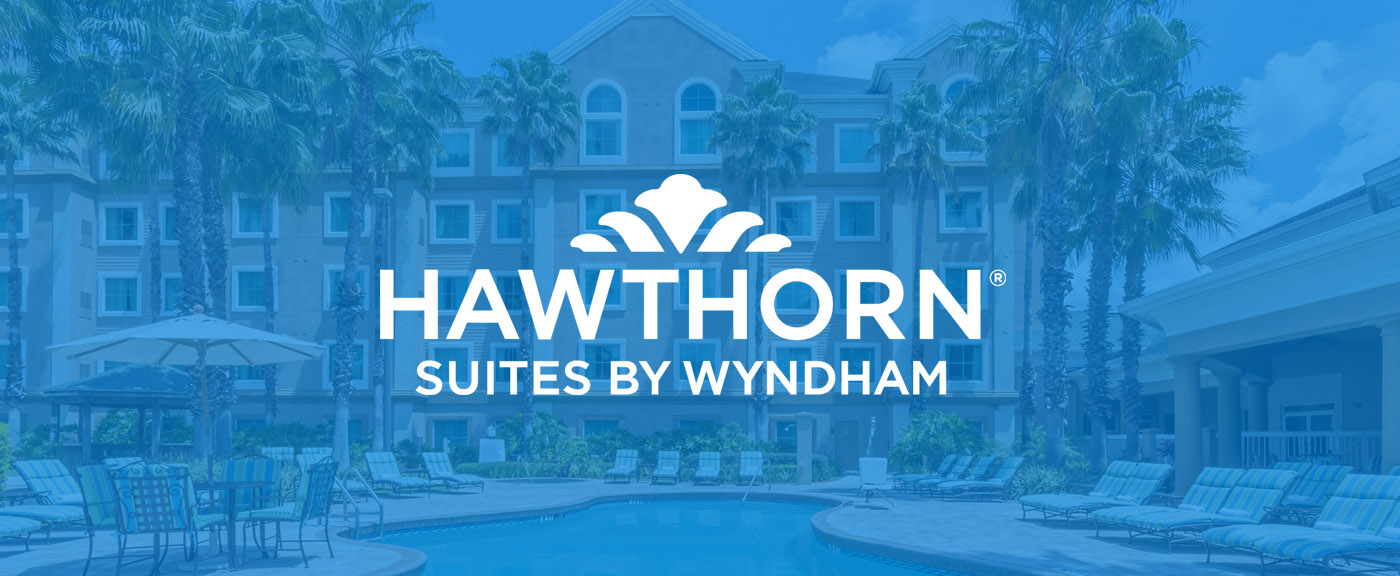A hotel, product management SaaS company, the telecom giant, and point-of-sale software provider – what do these businesses have in common? Well, they’ve all adopted the Customer Effort Score (CES) as a metric to drive a better customer experience with the aim of building customer loyalty.
Since the Customer Effort Score is so new, it can be hard to find real-life examples of how companies use it day-to-day. What challenges have they overcome? How have they implemented their surveys to get the most actionable advice?
We hunted down four companies who have put the CES to the test. We wanted to hear about their experiences and get their hot-take on what works well for them. Here they are!

Hawthorn Suites
- Located next to The Happiest Place on Earth, Hawthorn Suites Lake Buena Vista, needed to go above and beyond to give guests an amazing experience. They decided to switch to the CES after noticing that even visitors who responded “satisfied” never return. They needed to dig into what was driving building customer loyalty.
Amanda Basse, Marketing Coordinator for Hawthorn Suites, explains their approach to surveys: “We have had the best results with asking if a guest would like to take a survey in person. If they say yes, we immediately email them the survey. If they decline, we thank them anyway”. It makes sure that guests expect the email and we prime them for giving feedback. Initially, Hawthorn Suites emailed a five question survey, but they discovered that most guests wouldn’t complete the survey. Apparently, there was an 80% drop-off by question 3! Reducing it to just one question ensured a higher response rate and better overall feedback.
If there was one thing Amanda would recommend when implementing the CES, it’s using the full 7 point scale. Because a 5 point scale includes a 20% variation between grades, it’s difficult to get actionable insight from the survey. “Reducing the variation by just 5% can pinpoint exactly where we need to improve”, Amanda discovered. While people expect clean sheets and clean room, the real value is giving guests the impression that we welcome and appreciate them. As Amanda puts it, “an excellent experience more likely gets you reoccurring business.”
Wrike
- Wrike is an online project management tool that helps teams at co-operating better. Their support team focuses tightly on their customers’ success. And using the CES has helped them meet that goal.
Daria Nifontova, Support Team Lead at Wrike, tells us more about why they’ve made the switch from CSAT: “Measuring customer satisfaction didn’t let us identify what we, as a support team, could do better. While the CES almost exclusively focuses on a customer’s experience with support.” Implementing the CES provided more actionable insight. Support teams can see how they can continue improving and head towards building customer loyalty.
The results surprised Daria, “The biggest insight was that the highest amount of negative responses almost NEVER connects to support. It’s people not loving the product, or expecting it to work differently or upset that a sales person has not contacted them yet (or contacted them too often!). It’s very rare that people are unhappy about talking to the support agent.” For a team lead, this information is invaluable. Knowing that the individual interactions aren’t causing frustration means that the team leadership can focus their attention on processes instead of training agents.
Wrike did just that; they could improve the handoff process between sales and support to make sure customer experience at every stage was effortless. Without using the CES, they would have never been able to spot where the customers were becoming frustrated. And it would stand in the way of their building customer loyalty.
Daria’s one piece of advice for teams considering migrating to the CES? “Do it!” 🙂
BT
- BT was one of the first companies to jump on board the Customer Effort Score trend. Led by Dr. Nicola Millard, BT’s customer experience futurologist, they implemented the tool back in 2011. Their work with the CES shows the value of using a new metric at a massive scale.
BT offers customer service over a variety of channels and comparing the CES across them was revolutionary. Dr. Millard explains: “The great thing about that is that it then becomes very actionable. For example, if the IVR gets a rating of two, you can question whether it works for customers. You can ask why and you can do something very pragmatic about it. So it’s a great tool to gauge customer reaction to not only the channels but the changes within those channels.”
Nicola does suggest using the CES as a complement to other more traditional metrics – the NPS and CSAT – the BT service team still uses them. For instance, different stages of the customer journey might have a higher satisfaction score, and others have a small Customer Effort Score. Layering metrics together provides a complete view of the route. Because of this, BT doesn’t suggest ditching other metrics to focus only on the effort. However, their success with the CES does show how effective the metric is in a massive customer service operation.
See more – watch Dr. Nicola Millard talk about Customer Effort Score in action.
Vend
- Vend, a POS software provider, has a reputation for fantastic customer service. Seriously, their team is a four-time Stevie Awards winner. So how does a consistently excellent customer service team continue to up their game? Matt Searle, Support Operations Manager at Vend, explains.
“We’d been finding measuring the CSAT not overly useful for a while. It had been steadily above 92% for 18 months. Despite tweaking the prompt for comments regularly, the comments we were getting weren’t overly helpful in pointing to what we could improve.” Then, Matt shares, one of the managers read The Effortless Experience and shared it around. “We decided to give it a try! The only other metric we’d seen people using had been the NPS. But we didn’t agree with that as you aren’t supposed to apply it at a transactional level.”
Measuring the CES had an immediate payoff. Since the team had been laser focused on sticking to providing a quick first reply time (under 2 hours for VIP customers!), this meant they weren’t hitting the mark on the reply time after the first response. “Once we switched over to the CES the comments started coming in thick and fast. The initial reaction was great. We were dropping the ball on the following replies – we’d never even thought to measure it! So we had a look, agreed with it and have undertaken a big project to fix this by overhauling the way we handle our support queue.”
Matt has a ton of advice for those thinking about the CES. “Get started today. Be prepared to have long-running assumptions challenged and get buy-in to make the changes necessary. Lastly, look beyond the average score; the distribution of scores you get are just as, if not more, important. If you’re getting 80 sevens, 15 twos, and five ones then focussing on those and twos will be much more helpful than patting yourself on the back for your average score of 5.95.”
More Questions on Building Customer Loyalty?
Thanks so much to everyone who shared their experiences with us! It seems like the teams who’ve adopted the CES have been seeing great rewards in building customer loyalty. If you still have more questions about the CES, please let us know, and we’ll add them to our FAQ post here.










